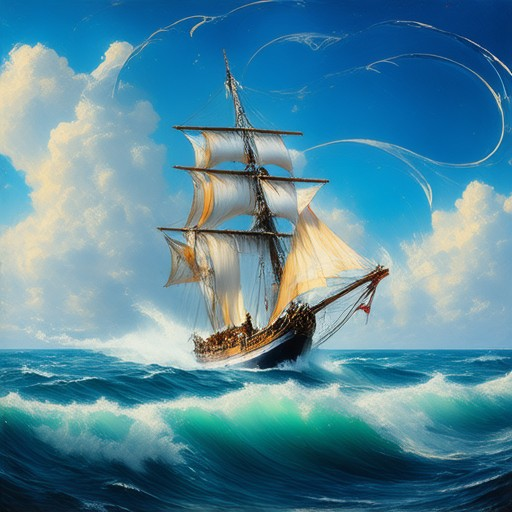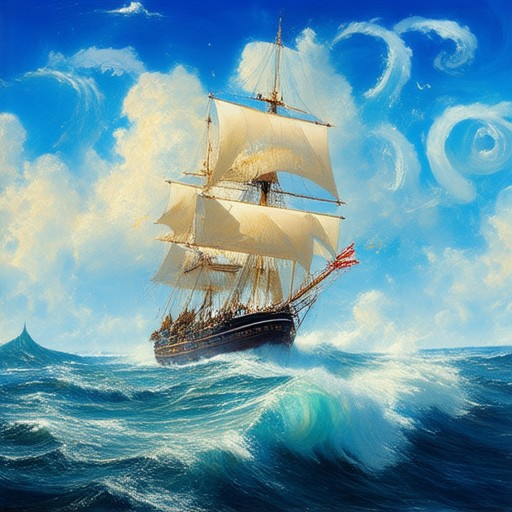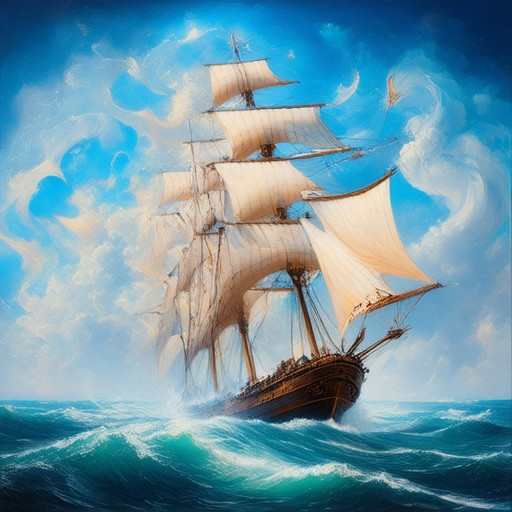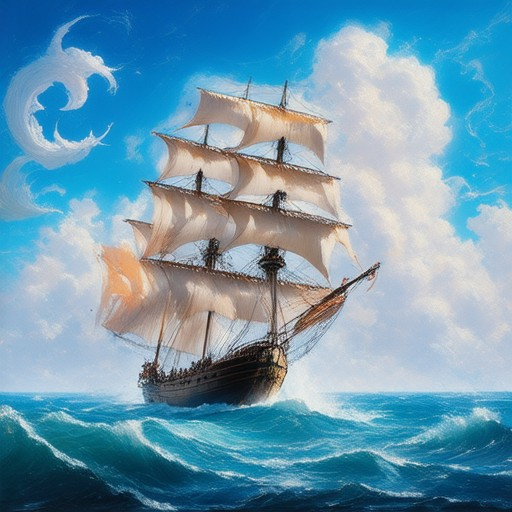Sailing has always been more than just a pastime; it’s a lifestyle, a mindset, and a reflection of diverse global cultures. From ancient trade routes to modern adventures, the art of sailing captures the essence of adventure, freedom, and exploration. Whether you’re a seasoned sailor or just beginning, understanding the rich tapestry of sailing culture can transform your experience on the water. In this guide, we’ll delve into the history, skills, and cultural significance of sailing, offering insights that go beyond the boat and into the soul of maritime traditions.
Key Takeaways
– Resilience and Adaptability: Sailing teaches you to navigate uncertainty and adapt to changing conditions, translating into handling life’s unpredictability.
– Teamwork and Collaboration: Working as a crew fosters trust and communication, mirroring the importance of teamwork in other areas of life.
– Planning and Organization: Sailing requires meticulous preparation, instilling a sense of responsibility and organization.
– Mindfulness and Presence: The constant changes in the environment demand full attention, promoting mindfulness and appreciation for the present moment.
– Problem-Solving Skills: Sailors develop sharp abilities to address challenges, whether fixing broken equipment or solving personal conflicts.
– Connection to Nature: Sailing rekindles our bond with the natural world, emphasizing respect for the environment and sustainability.
– Leadership and Decision-Making: Captaining a vessel hones leadership skills, enhancing confidence in making critical decisions.
– Gratitude and Humility: The beauty of nature while sailing fosters gratitude and a sense of humility.
– Continuous Learning: Sailing demands ongoing education, benefiting personal growth and career development.
– Adventure and Exploration: Sailing ignites a spirit of discovery, encouraging risk-taking and pursuing passions.
– Mental Health Benefits: Sailing reduces stress, improves mood, boosts confidence, and fosters social connections, contributing to overall well-being.
– Stress Relief and Relaxation: The rhythmic motion and serene environment of sailing promote mindfulness and relaxation.
– Connection with Nature: Navigating by the sun, moon, and stars deepens sailors’ appreciation for the natural world.
– Recreational Fun and Camaraderie: Sailing offers endless opportunities for fun, whether through casual outings or competitive races.

What Are the 3 Rules of Sailing?
The three fundamental rules of sailing, often referred to as the “rules of the road” for boats, govern how vessels navigate and interact with each other on the water. These principles ensure safety and order among maritime traffic:
- Same Tack :
- When two boats are on the same tack (both heading in the same direction), the boat on the leeward side (the one closer to the wind) has the right-of-way. This ensures that the boat on the windward side yields to prevent collisions.
- Opposite Tacks :
- If two boats are on opposite tacks (one heading east and the other west, or vice versa), the boat on the starboard (portside) tack has the right-of-way. This rule applies when one boat is overtaking another or when they are approaching each other head-on.
- Overtaking :
- During an overtaking maneuver, the boat that is ahead (the one being overtaken) retains the right-of-way. The overtaking boat must maneuver carefully to pass safely without causing a collision.
These rules are essential for maintaining order and preventing accidents on the water. By adhering to them, sailors can navigate confidently and share the waterways responsibly.
Sailing Ship Theory
The sailing ship effect refers to a phenomenon observed in the tech industry where the introduction of a groundbreaking technology accelerates the pace of innovation within an established technology sector. This concept gained recognition when W.H. Ward coined the term in 1967, though the underlying idea was understood earlier in works by S.C.
The sailing ship effect often leads to rapid advancements in established fields due to the competitive pressure created by new innovations. This dynamic can result in breakthroughs that might otherwise take decades to develop.
Implications of the Sailing Ship Effect
- The arrival of a disruptive technology can catalyze unprecedented progress in traditional industries.
- Competitors may race to adapt their products and services to stay relevant in the evolving market.
- This effect can accelerate the adoption of new technologies across various sectors, fostering economic growth and technological advancement.
The sailing ship theory highlights the importance of staying adaptable and open to change in order to navigate the rapidly changing landscape of modern technology.
Connection to Sailing Photo Awards
Sailing Photo Awards embodies the spirit of the sailing ship effect by celebrating innovation in sailing photography. Just as new technologies push traditional industries forward, the artistry of sailing photography continues to evolve, inspiring new ways to capture the beauty of the sea.
Our platform serves as a hub for sailing enthusiasts, photographers, and storytelling enthusiasts, showcasing the latest works and providing resources to help creators excel. By fostering collaboration and innovation, we aim to set a new standard for sailing photography, much like the technologies that drive maritime progress.
Explore our gallery, learn from expert photographers, and join our community to contribute your own unique vision to the art of sailing photography.
Visit us at SailingPhotoAwards.com to discover more about our mission and opportunities to participate in this transformative field.

The Five Essentials of Sailing
Here are the five key components every sailor should understand and master:
- Safety First : Always prioritize safety. This includes wearing proper safety gear, knowing emergency procedures, and being aware of potential hazards like rough waters or inclement weather. Staying vigilant ensures everyone on board remains secure.
- Navigation Skills : Mastery of navigation is critical. Learn to read maps, charts, and understand compass directions. Utilize GPS and other navigation tools to plot courses accurately. Proper preparation prevents getting lost or disoriented.
- Weather Awareness : Understanding weather patterns is essential. Study wind direction, speed, and wave conditions. Knowing how these factors impact your journey allows you to adjust your strategy and ensure a safer trip.
- Knots and Ropes : Proficiency in tying knots and handling ropes is fundamental. Essential knots include the bowline, cleat hitch, and sheet bend. Practicing these ensures your vessel is securely fastened and maneuverable in various situations.
- Environmental Responsibility : Respect the environment by minimizing waste and avoiding pollution. Dispose of trash properly and conserve water. By taking care of the surroundings, you contribute to sustainable sailing practices.
These five essentials form the foundation of safe and effective sailing. Mastering them enhances your confidence and ensures enjoyable voyages.

What Does Sailing Teach You About Life?
Sailing offers a unique perspective on life, teaching valuable lessons that extend far beyond the open waters. It’s a blend of skill, adaptability, and teamwork that mirrors many life challenges we face.
The Art of Resilience
Sailing teaches you to navigate uncertainty and adapt to changing conditions. Whether dealing with rough seas or mechanical failures, sailors develop a resilience that translates into handling life’s unpredictability. The ability to troubleshoot and remain calm under pressure is a skill that serves you well in any situation.
Teamwork and Trust
Working as a crew requires trust and communication. Each member relies on the others to stay safe and efficient. This collaborative environment fosters strong relationships and teaches the importance of relying on others, much like working in a team at work or raising a family.
Planning and Preparation
Before setting sail, extensive planning is required, from checking weather forecasts to stocking supplies. This attention to detail and proactive approach instills a sense of responsibility and organization, helping you tackle larger life goals with confidence.
Embracing the Present Moment
Sailing forces you to live in the now. The constant changes in the environment demand your full attention, teaching mindfulness and appreciation for the current experience. This mindset helps you find joy in the little things and manage stress effectively.
Problem-Solving Skills
From fixing a broken rigging to navigating unfamiliar waters, sailors develop sharp problem-solving abilities. These skills enable you to approach challenges methodically, whether resolving conflicts or overcoming personal obstacles.
Connection to Nature
Sailing reconnects you with the natural world, teaching respect for the environment and its power. This awareness fosters a deeper understanding of ecosystems and the importance of sustainability, values that are increasingly vital in today’s world.
Leadership and Decision-Making
On a sailing vessel, the captain makes critical decisions that impact everyone’s safety and progress. This experience hones leadership skills and enhances your ability to make confident choices, whether leading a team or managing personal finances.
Gratitude and Appreciation
Experiencing the beauty of nature while sailing fosters gratitude and a sense of humility. It reminds you of the vastness of the world and the importance of cherishing moments with loved ones.
Continuous Learning
Sailing is a constantly evolving activity that requires ongoing learning. From mastering navigation tools to staying updated on safety protocols, sailors embrace lifelong learning, a trait that benefits personal growth and career development.
A Sense of Adventure
Sailing ignites a spirit of adventure and exploration. It teaches you to embrace uncertainty and seek new experiences, qualities that encourage you to take risks and pursue passions in life.
Ultimately, sailing is more than just a hobby—it’s a metaphor for life. It teaches us to navigate life’s storms with courage, cherish the journey, and find joy in the process.
Sailing and Mental Health
Sailing can significantly contribute to mental health by reducing stress, improving mood, and fostering a sense of accomplishment. Here are some ways sailing positively impacts mental well-being:
- Reduces Stress and Anxiety: The act of sailing requires concentration and focus, which can help clear the mind. Being in control of a vessel and navigating through challenges promotes a sense of mastery, leading to reduced stress and anxiety.
- Improves Mood and Emotional Well-being: Spending time on the water surrounded by nature has been shown to lower cortisol levels, the body’s primary stress hormone. This can result in improved emotional health and a more positive outlook on life.
- Boosts Confidence and Self-Esteem: Mastering sailing skills can enhance self-confidence and self-esteem. Overcoming challenges on the water builds resilience, which translates well into everyday life.
- Connects with Nature: Sailing offers a unique opportunity to connect with nature, which can be therapeutic. The fresh air, vast open spaces, and the rhythm of the waves can help reduce feelings of anxiety and depression.
- Fosters Social Connections: Many sailors find that the shared experience of sailing strengthens relationships. Working as a team to navigate and enjoy the journey can foster camaraderie and reduce feelings of loneliness.
- Encourages Mindfulness: The focus required in sailing can help individuals practice mindfulness, staying present in the moment and reducing worries about the past or future.
Sailing isn’t just an adventure on the water—it’s also a powerful tool for mental health. Whether you’re an experienced sailor or just beginning, the benefits of sailing extend far beyond the horizon, offering a sense of peace, accomplishment, and connection that can last a lifetime.
Explore more sailing experiences and stories .

Why Do People Love Sailing?
Sailing captivates individuals for a multitude of reasons, each contributing to its enduring popularity. Here are ten compelling reasons that highlight why sailing holds such a special place in the hearts of many:
- Stress Relief and Relaxation
The rhythmic motion of the waves and the gentle breeze can create a calming effect, offering a perfect escape from the chaos of daily life. Sailing provides a serene environment conducive to mindfulness and relaxation. - Connection with Nature
Sailors develop a deep bond with the ocean, appreciating its beauty and power. The ability to navigate by the sun, moon, and stars adds an element of wonder and connection to the natural world. - Adventure and Exploration
Sailing offers the opportunity to explore hidden coves, pristine beaches, and remote islands that are inaccessible by land. It allows for the discovery of new horizons and cultural experiences. - Teamwork and Camaraderie
Whether racing against the clock or simply enjoying a leisurely cruise, sailing often involves collaboration with crew members or friends. This teamwork fosters strong bonds and shared memories. - Mastery and Challenge
The art of sailing requires skill, strategy, and adaptability. Successfully navigating rough waters or mastering the physics of wind and motion can be incredibly rewarding, challenging the sailor’s knowledge and reflexes. - Aesthetic Beauty
The gracefulness of sailboats gliding through the water is visually captivating. Many sailors appreciate the design and functionality of their vessels, viewing them as works of art. - Personal Growth and Skill Development
Learning to sail involves overcoming obstacles and developing a deep understanding of the marine environment. This process fosters self-confidence and problem-solving abilities, contributing to personal development. - Historical and Cultural Significance
Sailing has played a pivotal role in shaping human history, from trade routes to exploration. Engaging in this timeless activity connects individuals to centuries of maritime heritage. - Recreational Fun
Whether for casual outings or competitive races, sailing offers endless opportunities for fun and excitement. It caters to a variety of preferences, whether you prefer relaxed cruises or high-energy adventures. - Photography and Artistry
Sailing provides unparalleled opportunities for capturing stunning visuals. Skies painted with vibrant hues, reflections on calm waters, and the silhouette of sails against the horizon are scenes that inspire artistic expression.
In conclusion, sailing embodies a blend of relaxation, adventure, and personal growth, making it a beloved activity for millions. Its unique combination of challenges and serenity continues to draw people to the open seas, where every journey is a new experience waiting to be discovered.



0 Comments